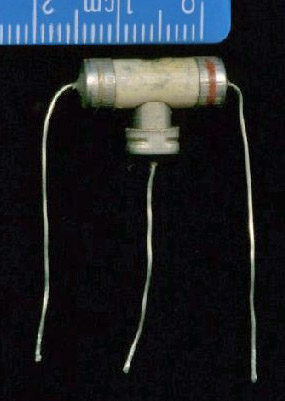
This device, originally called the 'transistron', is a point-contact transistor that was invented, quite independently of the Bell Labs work, by two German physicists: Dr. Herbert F. Mataré and Heinrich Welker, working at the Compagnie des Freins & Signaux Westinghouse (not a subsidiary of Westinghouse Electric) in Aulnay-sous-Bois near Paris. Although the transistron was created a few months after the Bell team's success, the secrecy surrounding the Bell work ensured that the French lab's team were unaware that they had not been the first to create a solid-state amplifier. However, although the French press celebrated the invention at the time and William Shockley himself visited them in Paris, Westinghouse F&S did not choose to pursue it. The French work was overshadowed by Bell's announcement, Westinghouse F&S closed their research lab, and for nearly fifty years this historic invention was almost forgotten.
Recently, interest in Dr. Mataré and his device has revived. An article was published in the New York Times of 24 February 2003. A Belgian historian, Armand Van Dormael, has published a book called "The Silicon Revolution" that includes the story of the French Transistron development. A short summary with photos of the two inventors can be found in the timeline of the history of computing Web site. An article has also been published in the IEEE Conference on the History of Electronics-Bletchley Park 2004.

The IEEE Spectrum magazine for November 2005, contains an article about Mataré's work, also downloadable as a pdf on the PBS site. The magazine contacted me because they had heard about my transistron. With their help I was able to have it x-rayed in a superb device that takes a continuous x-ray video whilst the camera can be rotated around the subject. The lower image on this page is a still taken by this device, and clearly shows the internal point contacts pressing against the germanium die, which demonstrates conclusively that it is a point-contact transistor. A similar image was published in the Spectrum magazine article. More of these devices have now come to light, and the inventors' place in history has been assured.

